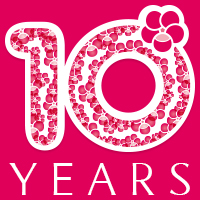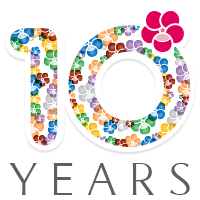


Ylang-ylang or Cananga odorata is part of the Annonaceae family. It is a tree native to Indonesia and the Philippines. Its fragrant flower is the reason for its great popularity and its introduction in China, India, Africa and America.
Ylang-ylang flower essential oil is frequently used in food, industry as well as in perfumery and aromatherapy (TAN & al., 2015).
It contains different chemical compounds such as sesquiterpenes, monoterpenes (linalool, geraniol, linalyl acetate, geranyl acetate, etc.), aliphatic compounds and phenylpropanoids (TAN & al., 2015).
Exposure to Ylang-ylang essential oil shows a significant anxiolytic effect on male mice but not on females. Indeed, in male mice, it increases locomotor activity in different behavioral tests such as elevated maze, open field, and light/dark box. Constituents extracted from the essential oil (benzyl benzoate, linalool and benzyl alcohol) showed anxiolytic effect on male subjects. It induces changes in neurotransmitters in males more significantly than in females: it decreases the concentration of dopamine in the striatum and increases the concentration of 5-hydroxytryptamine in the hippocampus of males. According to the authors, the origin of the difference in anxiolytic effect between the sexes is complex, and different compounds of Ylang-ylang could act on several signaling pathways (ZHANG & al., 2016).
This anxiolytic effect is associated with reduction of corticosterone levels in blood plasma, inhibition of activation of the ERK1/2/CREB pathway in the hippocampus, and modulation of cerebral serotonin metabolism (ZHANG & al., 2018).
In a study carried out on 24 healthy volunteers, it was shown that subjects who inhaled Ylang-ylang essential oil felt more alert and attentive than subjects in the control group. They rated the smell as more stimulating than subjects in the control group. It also significantly lowers blood pressure and heart rate. Thus, a decrease in physiological activation is correlated with an increase in arousal at the subjective level. Therefore, the authors state that these effects can be characterized by the notion of “attunement” rather than relaxation/sedation (HONGRATANAWORAKIT & BUCHBAUER, 2004).
In another study carried out on 40 healthy volunteers, the authors showed that transdermal absorption of Ylang-ylang essential oil causes a significant decrease in blood pressure and a significant increase in skin temperature. Treated subjects feel calmer and more relaxed than subjects in the control group (HONGRATANAWORAKIT & BUCHBAUER, 2006). These results are in agreement with those obtained in another study on 29 healthy men: the inhalation of Ylang-ylang extracts significantly reduces systolic and diastolic blood pressure, reduces heart rate and the level of excitement (JUNG & al., 2013).
Ylang-ylang bark extracts exhibit antimicrobial activity against the bacteria Propionibacterium acnes and Candida albicans. The anti-P. acnes activity index of the ethanolic extract of Ylang-ylang is 0.63 compared to the antibiotic chloramphenicol (KUSUMA &t al., 2014).
Moreover, different components isolated from the bark of Ylang-ylang, namely O-methylmoschatoline, liriodenine and 3,4-dihydroxybenzoic acid, have shown antimicrobial activities, especially against Bacillus subtilis, Staphylococcus aureus, Escherichia coli and Pseudomonas aeruginosa. These compounds also exhibit an antifungal effect against Aspergillus niger and Candida albicans (RAHMAN & al., 2005).
In addition, Ylang-ylang essential oil exhibits a marked inhibitory effect on different strains of Staphlycoccus aureus (MURBACH TELES ANDRADE & al., 2014).
It also exhibits intense repellent effects against Culex quinquefasciatus Say (85-97% escape) and Anopheles minimus Theobald (97-99%) mosquito species (SUKKANON & al., 2022).
Ylang-ylang extracts exhibit marked antioxidant activity in the DPPH test which determines free radical scavenging abilities (CHOI & HWANG, 2005).
Ylang-ylang essential oil also demonstrates antioxidant and free radical scavenging activity in the 𝛽-carotene bleaching test and the luminol-photochemiluminescence test (SACCHETTI & al., 2005).
The methanolic extract of Ylang-ylang leaves inhibits the release of nitric oxide in macrophages stimulated by lipopolysaccharides in vitro, demonstrating an anti-inflammatory effect (CHOI & HWANG, 2005).
In addition, oral administration of ethanolic extract of ylang-ylang fruit exhibits significant anti-inflammatory activity in the carrageenin-induced paw edema model in rats. This anti-inflammatory activity at doses of 100 mg/kg, 200 mg/kg and 400 mg/kg induces 62.9% inhibition, which is superior to standard aspirin which induces 60.14% inhibition (MANIYAR & DEVI, 2017).
So don’t wait any longer to discover the power of this magnificent flower with sweet and exotic scents!